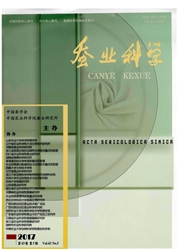

 中文摘要:
中文摘要:
建立科学评估丝绸文物老化程度的方法,有利于研究丝绸文物老化机理和正确选择文物的修复与保护方式。采用光学显微镜与电子显微镜观察不同时期、不同地区墓葬出土丝绸文物的织物表观形态以及纱线或纤维的纵向和截面形貌,并对各织物样品进行红外光谱测试。比较分析各丝绸文物样品的外观形貌与红外光谱,发现丝绸文物样品红外光谱中酰胺Ⅰ吸收峰向低波数的移动程度和酰胺Ⅱ/酰胺Ⅰ吸收峰比值与丝绸文物表观老化程度有一定关联:丝绸文物的外观形貌越差,酰胺Ⅱ/酰胺Ⅰ吸收峰的比值越小,酰胺Ⅰ吸收峰向低波数移动的距离越大。研究结果表明,可利用红外光谱对丝绸文物的老化程度进行评估。
 英文摘要:
英文摘要:
Establishing a scientific method for aging rate assessment of silk cultural relics would facilitate the study of aging mechanism and proper selection of methods for restoration and preservation of cultural relics. We used optical and electron microscopes to observe surface morphology as welt as the longitudinal and cross section morphology of yarn or fiber of unearthed silk cultural relics from different ages and locations, and tested the infrared spectra of various samples. Comparison of surface morphology and infrared spectra of different silk relics samples showed that the red-shift of amido Ⅰ absorption peak and amido Ⅱ/amido Ⅰ ratio were correlated with the aging degree of silk relics. The poorer the surface morphology of the silk cultural relics was, the lower the amido Ⅱ/amido Ⅰ ratio and the higher the red-shift of amido Ⅰ absorption peak. The results showed that infrared spectrogram can be used for assessment of the aging degree of silk cultural relics.
 同期刊论文项目
同期刊论文项目
 同项目期刊论文
同项目期刊论文
 期刊信息
期刊信息
